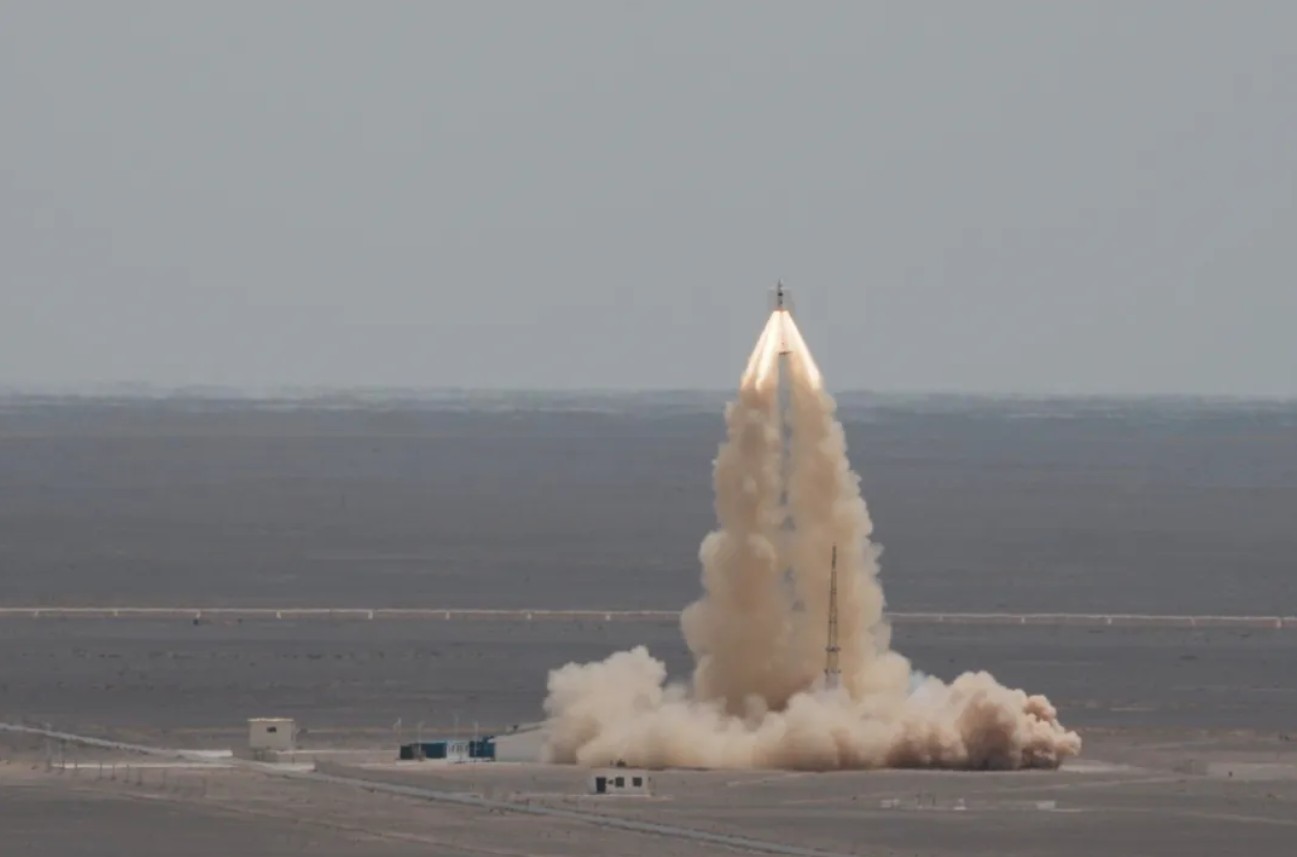On Tuesday, China successfully conducted a pad abort test for its next-generation crew spacecraft, designed for both lunar and low Earth orbit missions. This crucial test occurred on June 17 at the Jiuquan Satellite Launch Center, located in the Gobi Desert. According to the China Manned Space Agency (CMSEO), the ignition command was executed at 12:30 a.m. Eastern Time (0430 UTC; 12:30 p.m. Beijing time), activating the Mengzhou spacecraft’s launch escape system with solid propellant engines.
Footage from the test illustrated how the escape system propelled the spacecraft swiftly away from the launchpad. Approximately 20 seconds post-launch, the craft reached a designated altitude, at which point the return capsule detached from the escape tower and successfully deployed its parachutes.
The capsule landed safely in the designated area, cushioned by an airbag system, at 12:32 a.m., confirming the test’s success, as per CMSEO. This test serves to validate the systems essential for safely evacuating astronauts from the crew module during emergencies, marking a significant step towards China’s goal of sending astronauts to the moon by 2030.
Later this year, China intends to carry out an in-flight escape test under maximum dynamic pressure, although the specific date and location of that test remain undisclosed. It is possible that this upcoming test may utilize a Long March 5B or a specially designed test rocket to replicate splashdown and recovery processes from Wenchang, the future launch site for crewed lunar missions.
This pad abort test was China’s first of its kind since the Shenzhou spacecraft’s test in 1998, according to CMSEO. The agency noted a significant shift in approach with the Mengzhou spacecraft, which assumes complete responsibility for both abort control and crew safety, contrasting the traditional model used by Shenzhou, where the rocket managed the abort while the spacecraft focused on crew recovery.
In a similar vein, NASA performed a pad abort test for its Orion crew vehicle back in 2010 at the U.S. Army’s White Sands Missile Range.
The Mengzhou, meaning “dream vessel,” features a modular design with two versions: one for low Earth orbit and another dedicated to crewed lunar missions. The LEO version is partially reusable and has the capacity to transport up to seven astronauts to the Tiangong space station or carry reduced crews with up to 500 kilograms of cargo. The lunar variant, weighing in at 26,000 kilograms, is intended to carry three astronauts to lunar orbit and dock with a landing stack launched separately.
In 2020, a prototype of the Mengzhou, initially referred to as the “next-generation crew spacecraft,” was launched aboard the Long March 5B for a test flight focusing on high-speed reentry.
According to CMSEO, the Mengzhou is set to become the central crew vehicle for both space station operations and lunar exploration efforts. “The success of this test lays an important technical foundation for future crewed lunar missions,” stated CMSEO. “Development work on related spacecraft, such as the Long March 10 launch vehicle and the lunar lander, is progressing steadily and will proceed to further testing as scheduled.”
The Long March 10 will incorporate three core stages measuring 5.0 meters in diameter, powered by YF-100K kerosene-liquid oxygen engines, building on the progress made with the Long March 5. Construction of its launch facilities is currently underway at Wenchang, Hainan island, where an observation platform has been erected providing views of both national and commercial launch areas. A launch pad specifically for the Long March 10 crewed missions is also in the process of being built.

